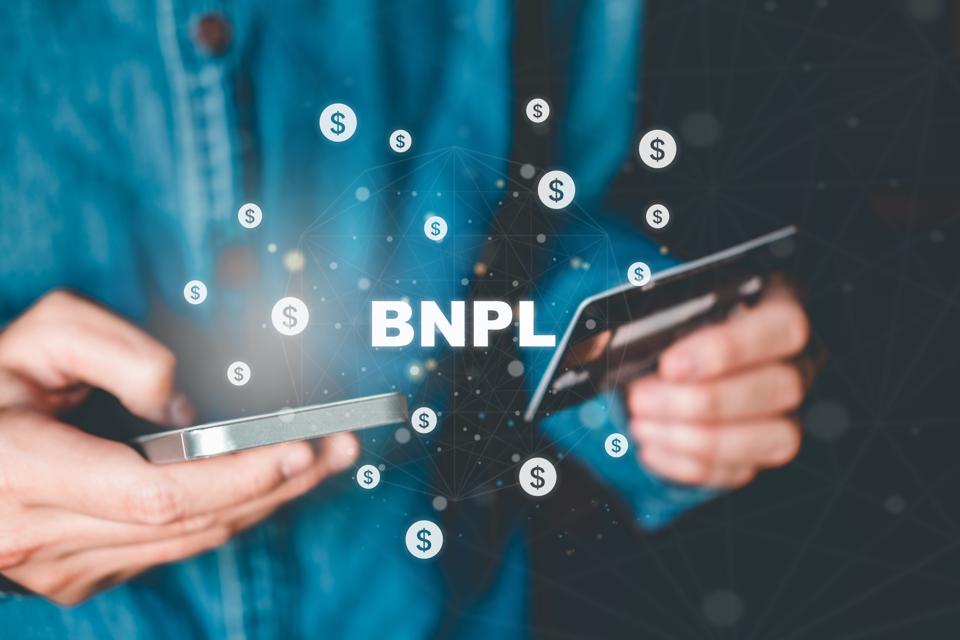The once-clear border between traditional banks and agile fintechs is rapidly blurring, particularly in the explosive $94.9 billion (projected 2023) Buy Now Pay Later (BNPL) market. This meteoric rise has been fueled by fintech’s focusing on two key forces: an insatiable consumer demand for flexible payment options and the ability to originate new loans instantly at the merchant checkout.
Consumers, especially younger generations, seek the availability and affordability of BNPL, desiring immediate purchases without the complexities of securing traditional bank loans.
Challenges Confronting Banks: Banks have not moved fast to address the consumer demand for pay later solutions embedded within the merchant purchase journey.
- Absent During Checkout: Banks miss the critical “in-checkout” moment, ceding ground to fintechs with integrated installment plans. Impulse purchases, a significant driver of retail transactions, are increasingly influenced by the availability of flexible payment options powered by BNPL fintechs.
- Merchant Adoption Dilemma: With over 4000 banks and credit unions in the United States alone, the challenge for merchants lies in streamlining the adoption of these diverse BNPL offerings. While the market is flooded with innovative payment methods from various financial institutions, merchants are seeking simplicity in implementation to avoid the complexities associated with integrating unique solutions from every bank.
- Modern Shopper Journey: To captivate younger consumers, banks must evolve and innovate to align with the contemporary experience powered by BNPL fintechs. The ability to adapt and integrate modern, customer-centric features will be critical to taking share from BNPL fintechs.
Challenges Faced by Fintechs: Because venture capital was abundant, and profitability was not a concern, BNPL fintechs dominated the market. However, cracks are starting to emerge in their business model.
- Plummeting Approval Rates: In the face of diminishing venture capital, BNPL fintech companies find themselves compelled to attain profitability. As a strategic shift, they are now focusing on a more discerning clientele with elevated FICO scores, leading to approval rates frequently plummeting to as low as 20%.
- High Cart Abandonment Rates: Complicated sign-up processes and multi-step loan applications can be frustrating for customers, making the buying experience harder, especially when they’re about to complete a purchase. This frustration often leads to more people leaving their shopping carts without completing their purchase.
- Commoditizing Shopper-Merchant Relationship: Several BNPL fintech firms have evolved into super apps, hijacking the entire shopping experience by employing advanced AI tools to strategically present competing offers to shoppers via sophisticated data harvesting initiatives. This has a significant impact on loyalty and repeat purchases for merchants.
The Path Forward for Banks: Rather than copying the fintech’s business model, banks have an opportunity to deliver the next generation of card-attached BNPL services that benefit both shoppers and merchants.
- Underutilized Assets: Banks overlook the trust and pre-approved credit card relationships they have with consumers. Rather than initiating new loans for individual BNPL transactions, banks have the opportunity to tap into the vast pool of over $3 trillion in approved credit to facilitate pay-later options. This approach not only enhances approval rates but also mitigates cart abandonment rates.
- Single Platform Integration: Forge partnerships with entities capable of providing a unified integration across multiple banks, streamlining the onboarding process for merchants adopting the bank’s BNPL solution. Such collaborations enable banks to seamlessly implement a modern end-to-end shopping experience that merchants will value.
- One-click Checkout Experience: Banks must stake a claim at the “checkout”, delivering an embedded solution for a one-click installment experience without the need for a new loan application. Declutter the checkout process with a solution that allows both the merchants and banks to lead with their brands.
- Deliver Omnichannel: In their conventional approach, many BNPL fintechs fail to recognize the omnichannel opportunity, a realm that surpasses the confines of eCommerce in its market size; within this multifaceted landscape, banks find themselves particularly well-positioned to excel, especially within the point-of-sale environment, where they can orchestrate a harmonious and flawless customer experience for BNPL.
Banks Possess an Advantage, Provided They Can Capitalize on it.
The landscape of BNPL is in the midst of a profound transformation. Fintech companies are swiftly advancing, prioritizing the “during purchase” experience. However 60% of consumers would prefer a BNPL that works with their existing credit card versus a new line of credit. Banks maintain crucial advantages in terms of scale, trust, and available credit. The key to triumph in the ongoing contest for the future of BNPL lies in synergizing the strengths of banks to offer a distinctive set of differentiators through strategic partnerships. These alliances should empower banks with the necessary tools to outpace BNPL fintechs. This involves gleaning valuable insights from the challenges faced by fintechs and providing customers with the lowest friction solution, seamlessly, swiftly, and securely adapted to their evolving needs. Despite a saturated BNPL market, banks can leverage their might by leapfrogging the entire industry with BNPL 2.0, but only if they act quickly and decisively.

